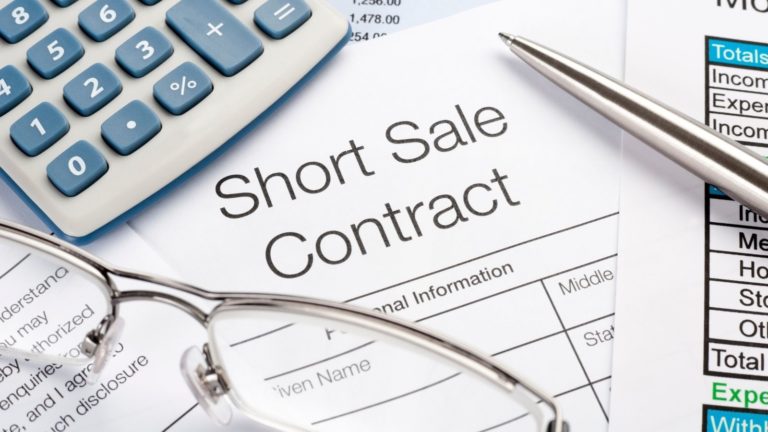Home sales can be stressful. Owners need to list, market and advertise their houses. They are usually preparing for showings while deciding where they’re going to live next.
Using a short sale to sell property can be a bit more complicated. There are many reasons why a short sale may be sought. Most of them involve unforeseen situations that prevent the seller from continuing to be able to make their mortgage payments in a timely manner.
Selling a home in Texas will take time. There are certain steps that must be taken, which aren’t always fast. It’s not uncommon for home sales to take several weeks or months. There could even be delays or other problems that pop up. Patience, persistence, and a proactive selling plan can help you achieve your goal.

Here are a few steps that you can take if you’re thinking about selling your home via a short sale:
1. Have the home valued.
Before a short sale can even begin, the mortgage lender must be sure that they will be taking a loss on the deal. The homeowner will probably owe more on the loan than the property’s fair market value, but that value has to be determined.
The fair market value can be evaluated by a broker, who will provide a broker’s price opinion (or BPO). A realtor can also assess the situation and come up with a comparative market analysis (CMA). The homeowner and the mortgage lender can both request this information if they so choose. Knowing what the home is really worth may make the bank, credit or other lending organization’s representative more agreeable to a short sale.
2. Prepare a hardship letter.
The next step is to write a hardship letter. This document will be given to the lender to explain why the homeowner is unable to fulfill the current loan obligations.
This document should be as detailed as possible. It should clearly spell out the reasons for the short sale request. The individual or couple may be going through a separation or divorce, lost a job, have unexpected medical bills, experienced the death of a family member, or other significant issues.
3. Request a short sale application.
A short sale application will then need to be provided by the mortgage lender. Without this paperwork, the short sale might not go through. The lender can only discuss the matter with possible realtors, investors or buyers after they’ve received written permission in advance from the homeowner.
The application will be included with other documents in the loss mitigation package. It’s more common in residential than commercial real estate, but lenders should still be prepared to face this eventuality when necessary. It’s also rare for mortgage companies to be proactive in this regard. You may have to contact your lender more than once to obtain this application.
4. Draft a purchase agreement.
Now it’s time to receive offers on the home. Each offer will be reviewed closely by the mortgage lender. This will be done via a signed sale contract or purchase agreement.
The fact that the sale will need approval from the seller’s home loan lender must be included in the purchase agreement. You can also include the buyer’s preapproval letter from their lending institution, along with a copy of the home listing which details the commission that the realtor will earn. Another important attachment is the arm’s length agreement. This may be supplied to verify that the buyer isn’t trying to do the seller a favor and that those parties don’t have any existing personal or professional relationships.

5. Get your short sale package ready.
Now it’s time to assemble all of your documentation for the short sale. Financial records, a copy of the loan contract and the hardship letter should be included.
You can add bank statements, pay stubs and tax returns as part of your financial information. Hospital or funeral bills that can confirm the hardship may also be supplied. The house should be valued either by a veteran appraiser or through a CMA or BPO. This evaluation should prove that the home probably won’t sell for much more or less than the amount that was offered by the buyer.
6. Have your short sale package evaluated by a loss mitigator.
A loss mitigator will be assigned by the lender. That person will go through the information that they received and their own data to determine if a short sale is the best possible solution.
The mitigator may take as much time as possible to reach a conclusion. They could ask to talk with your real estate agent or broker or request a title report to ensure that no one else could have a legal claim to the property. Both the buyer’s and seller’s realtors will remain in regular contact with their clients throughout the process.
7. Negotiate if necessary.
. If the lender approves the sale, they will provide a preliminary settlement statement. This document will list closing costs, the closing date and all other pertinent facts. The lender will receive all proceeds from the sale if there are no other lienholders on the home. If there are other lienholders, the amount that each one will receive from the transaction will be stipulated in the preliminary settlement statement.
The seller won’t make any money from the transaction. They can ask for a document that prohibits the possibility of filing any future deficiency judgments against them. The lender may waive that right if they are willing to accept the loss and recoup some of their money. If this happens, the seller won’t have to worry about paying any money that was left on the balance of the home loan.
8. Prepare for closing.
All final paperwork will be signed and filed at closing. The lienholders (if applicable) and lender will be paid for the sale. The buyer will get the keys to their new property. The home seller can walk away now that their involvement is over.
Talk to your real estate agent or mortgage lender if you have any questions or concerns. Be open and honest with your communication. When it’s time to create the short sale package, make sure that nothing important is left out.
Conclusion
Short sales aren’t what most homeowners want, but they can definitely come in handy. There’s a bit more work involved, but it’s nothing that you can’t handle. Once the sale is over, you can breathe easier. It’s time to close that chapter and look ahead to the next phase of your busy life in another location.


